Man always has been very conscious of speed and through the years has invented faster and faster machines to take him from one place to another. In a car or plane, he can cover great distances in a hurry, but on his own two feet man cannot compete with the speed of many fellow creatures.
With this awareness of
speed, it is not surprising
that man would want to know
just how fast other animals
can run or fly. However,
measuring animal speeds
accurately is very difficult,
and the results can vary.
Car speedometers, plane
airspeed indicators, radar
devices, and stopwatches
have been used to obtain
some information, but speeds
vary with individual animals
and conditions. Fear is
another factor that can
influence the animal’s
top speed.
An animal trying
to escape may surpass its
normal top speed by quite
a bit, just as a runner
can turn on a short, extremely
fast, burst of speed to
win a race. However, this
escape speed cannot be maintained
for any great distance.
Predatory species also may
turn on a burst of speed
to catch their prey.
There probably have been
more arguments over the
maximum speeds of birds
than any other creatures.
Estimated speeds for some
species rate higher than
200 miles per hour, but
most authorities believe
some of these records, which
were established several
years ago, are a bit exaggerated.
Many disagreements are based
on the fact that the speed
of a bird in flight often
is measured as ground speed.
This ground speed is determined
by measuring the time required
to fly from one fixed point
on the ground to another.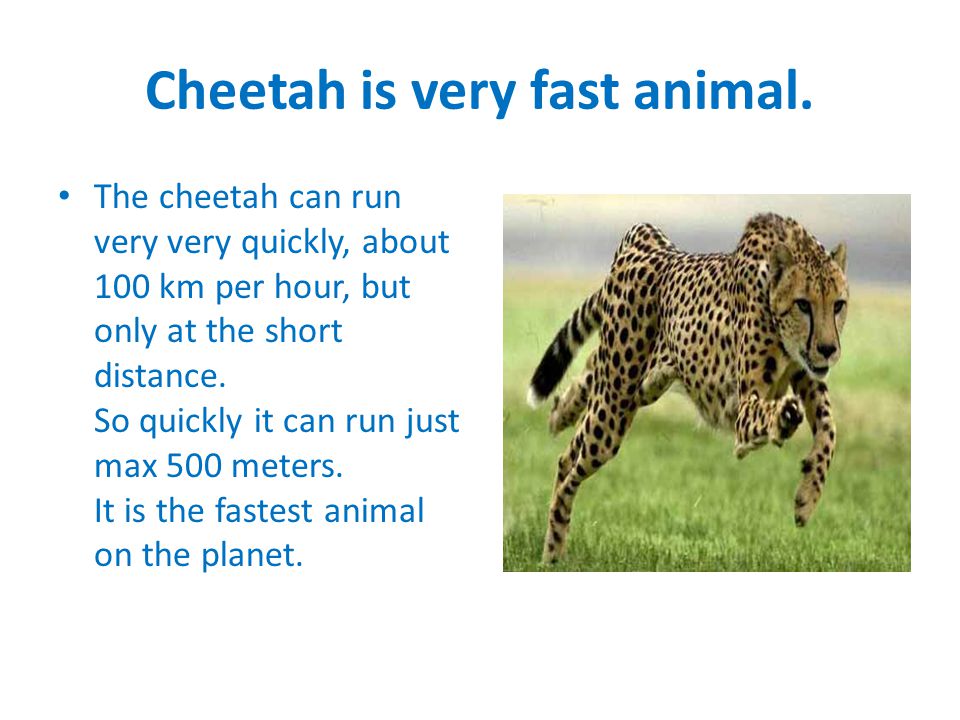 Since no consideration is
given to the wind conditions
in such a measurement, the
results can be misleading.
A bird flying at an airspeed
of 25 MPH with a 35-MPH
tail wind will appear to
be flying at a ground speed
of 60 MPH. If no wind were
present, the bird would
cover the same distance
at only 25 MPH, and flying
against a head wind would
further reduce the speed.
Measurements made with airplanes
and radar devices have established
flight speeds at lower,
but possibly more accurate
levels.
Since no consideration is
given to the wind conditions
in such a measurement, the
results can be misleading.
A bird flying at an airspeed
of 25 MPH with a 35-MPH
tail wind will appear to
be flying at a ground speed
of 60 MPH. If no wind were
present, the bird would
cover the same distance
at only 25 MPH, and flying
against a head wind would
further reduce the speed.
Measurements made with airplanes
and radar devices have established
flight speeds at lower,
but possibly more accurate
levels.
One of the slowest recorded
speeds for a bird in flight
is the 5 MPH credited to
the woodcock. Fastest speeds
are recorded for the swifts,
falcons, and homing pigeons,
depending upon which statistics
are accepted. Two species
of swifts, timed over a
measured course of two miles
in India, covered the distance
in thirty-six to forty-two
seconds. This places their
speeds at 171 to 200 MPH.
Since no data are recorded
concerning the wind speed
or direction at the time
of the flight, their true
airspeed could have been
less. It is reported that
on another occasion a flock
of swifts overtook and circled
a small plane traveling
at 68 MPH. It is estimated
that these birds were flying
at 100 MPH.
This places their
speeds at 171 to 200 MPH.
Since no data are recorded
concerning the wind speed
or direction at the time
of the flight, their true
airspeed could have been
less. It is reported that
on another occasion a flock
of swifts overtook and circled
a small plane traveling
at 68 MPH. It is estimated
that these birds were flying
at 100 MPH.
Other authorities consider the homing pigeon to be the fastest bird because it can maintain a high rate of speed for long distances. It has been accurately measured at a speed of 94.3 MPH. One homing pigeon averaged 73 MPH over a distance of 182 miles, and several have flown over 90 MPH for distances of at least 80 miles.
The peregrine falcon,
which preys on other birds,
flies at speeds of 65 to
70 MPH, but it has been
clocked at diving speeds
of 170 to 180 MPH.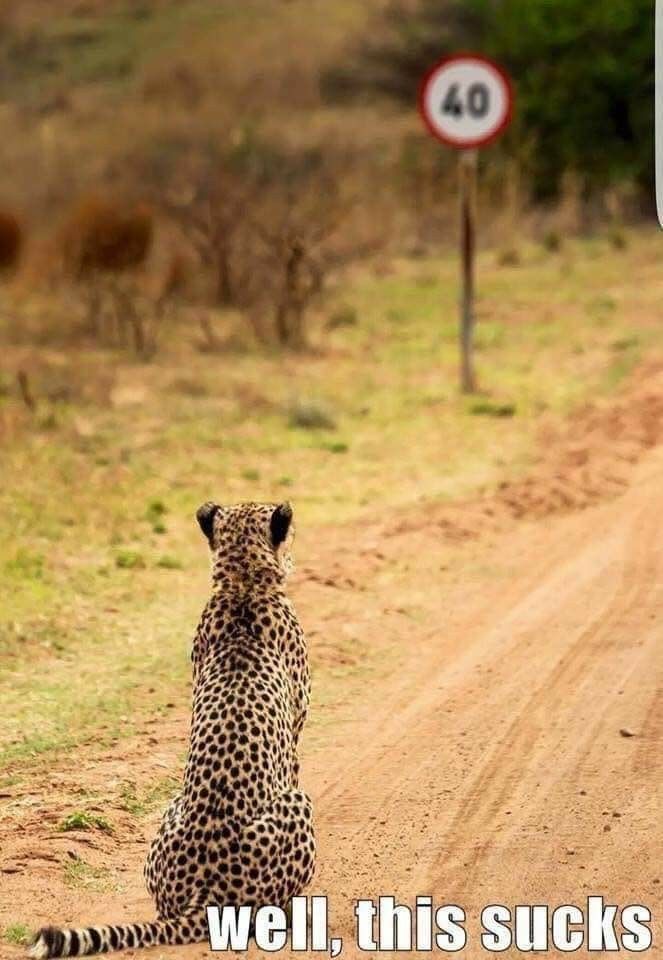 Most
ducks and geese can fly
at a speed ranging from
60 to 70 MPH; however, their
usual flying speed is much
slower. At its 40-MPH cruising
speed, the mallard out flies
the teal, which cruises
along at 32 MPH. But if
pressed, both birds can
accelerate to around 60
MPH.
Most
ducks and geese can fly
at a speed ranging from
60 to 70 MPH; however, their
usual flying speed is much
slower. At its 40-MPH cruising
speed, the mallard out flies
the teal, which cruises
along at 32 MPH. But if
pressed, both birds can
accelerate to around 60
MPH.
Probably the most amazing speed, because of the bird’s small size, is that recorded for the hummingbird. With wingbeats approaching 200 per second, the ruby-throated hummingbird can dart from flower to flower at speeds up to 60 MPH.
Although the speediest
of land animals cannot match
the times of the fastest
flyers, the cheetah, recognized
as the world’s fastest
runner, is able to run 70
MPH for short distances.
From a standing start, the
cheetah can accelerate to
45 MPH in two seconds and
cover a distance of sixty-five
yards. Because of its limited
endurance, this big cat
is exhausted after a high-speed
dash of several hundred
yards, but it can run comfortably
at 30 to 40 MPH for as long
as half an hour.
Because of its limited
endurance, this big cat
is exhausted after a high-speed
dash of several hundred
yards, but it can run comfortably
at 30 to 40 MPH for as long
as half an hour.
Pronghorn antelope are the fastest mammals on the North American continent. When chased by a car, one pronghorn maintained a speed of 60 MPH for two miles before it dropped to 50 MPH and then slacked of to a running speed of 40 MPH. In many instances these fleet-footed animals have averaged 35 MPH for distances as great as twenty-seven miles.
In a half-mile distance,
a jackrabbit can run 45
MPH. The slower coyote,
which runs between 35
MPH and 40 MPH, cannot
catch it in this first
half-mile, but the coyote
has the endurance to maintain
its speed over a greater
distance until its faster
prey gets tired and slows
down. An elephant usually
strolls along at a comfortable
2 to 4 MPH, but when charging,
an African elephant can
reach a speed of 25 MPH.
An elephant usually
strolls along at a comfortable
2 to 4 MPH, but when charging,
an African elephant can
reach a speed of 25 MPH.
Man appears on the speed chart at 20 to 25 MPH. Some of our fastest runners have managed the 100-yard dash in 9.1 seconds, which converts to a speed of 22.48 MPH. When Bob Hayes first set this record in 1963, he attained his top speed between the 60- and 75-yard marks. During this 15-yard stretch, which he covered in 1.1 seconds, he was running at 27.89 MPH. But just as the cheetah cannot maintain its maximum speed for long, neither can man. The speed for most serious long-distance runners usually averages about 12 MPH.
In comparisons with
the world’s fastest
animals, man is pretty
far down the scale, but
there are still many creatures
that move a lot slower.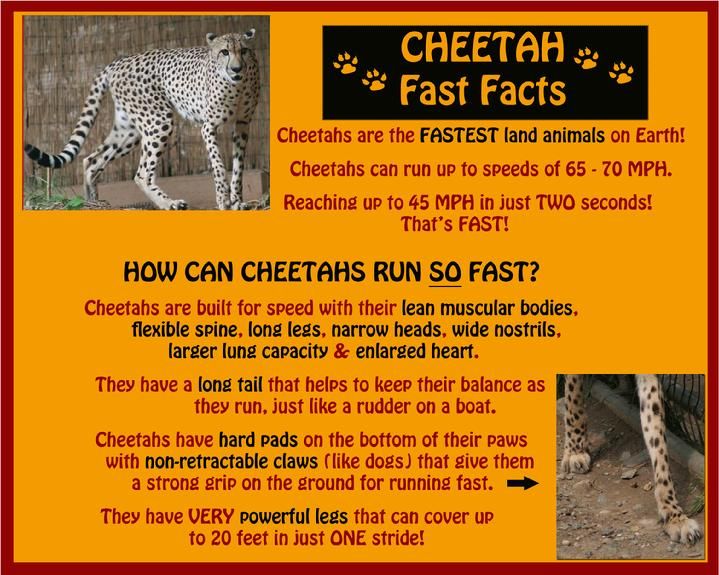 The snail can manage only
fifty-five yards an hour.
In that fabled race of
storybooks, man may not
be able to match the speed
of the hare, but he’s
way ahead of the turtle
that plods along at one-tenth
of a mile per hour.
The snail can manage only
fifty-five yards an hour.
In that fabled race of
storybooks, man may not
be able to match the speed
of the hare, but he’s
way ahead of the turtle
that plods along at one-tenth
of a mile per hour.
| Animal | Possible Speeds in Miles Per Hour |
|---|---|
| Swift (some species) | 100 to 200 |
| Homing pigeon | 90 to 95 |
| Falcon | 65 to 70 |
| Cheetah | 65 to 70 |
| Ducks and geese | 60 to 70 |
| Pronghorn antelope | 55 to 60 |
| Mourning dove | 55 to 60 |
| Hummingbird | 55 to 60 |
| Horse | 45 to 50 |
| Starling | 45 to 50 |
| Ostrich | 45 to 50 |
| Jackrabbit | 40 to 45 |
| Elk | 40 to 45 |
| Quail | 40 to 45 |
| Crow | 40 to 45 |
| Gray fox | 35 to 42 |
| Coyote | 35 to 40 |
| Deer | 35 to 40 |
| Heron | 35 to 40 |
| Sparrow | 35 to 40 |
| Pheasant | 35 to 40 |
| Moose | 35 to 40 |
| Gull | 30 to 35 |
| Bison | 30 to 35 |
| Grizzly bear | 30 to 35 |
| Pelican | 25 to 30 |
| Blue jay | 20 to 25 |
| Man | 20 to 25 |
| Elephant | 4 to 25 |
| Bat | 12 to 15 |
| Squirrel | 10 to 12 |
A cheetah can run up to 120 kph. It runs faster than any other animal on the planet. The acceleration of a cheetah, 0-100 km/h in just three seconds, is just as incredible. It reaches its maximum speed in short bursts.
It runs faster than any other animal on the planet. The acceleration of a cheetah, 0-100 km/h in just three seconds, is just as incredible. It reaches its maximum speed in short bursts.
This special cat doesn’t just run faster than man; it travels faster than almost anything human civilization has ever created.
A cheetah’s acceleration (0-100 km/h) is even quicker than a Ferrari 488 and Porsche 911 GT3.
But there are problems for these incredible animals. Cheetahs have lost 91% of their historical range over the last century. Less than 7000 of them remain.
So how fast does a cheetah run? What is the reason for its speed? And what may the future hold for cheetahs?
Here’s everything you need to know about the speediest African animal there is.
The top speed of a mature cheetah is around 120 kph (roughly 75 mph).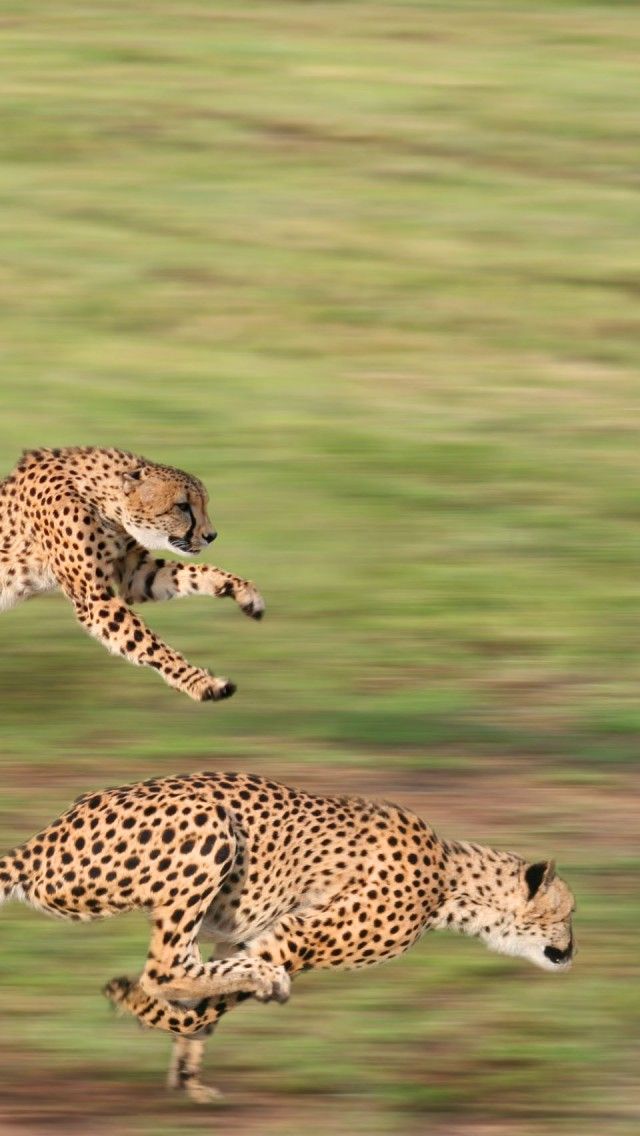 It takes a lot of energy to run this fast, so sprinting isn’t a regular part of a cheetah’s day.
It takes a lot of energy to run this fast, so sprinting isn’t a regular part of a cheetah’s day.
A cheetah can reach 120 km/h in a minute. With its slender body and fast-twitch muscle fibers, the cheetah accelerates at 10 meters per second squared.
Within three strides, the spotted hunter has reached 60 mph (96.6 kph). Just let that number sink in – zero to 60 mph in just three strides (around 3-5 seconds)!
Cheetahs reach their maximum speed in 30 seconds. Within half a minute, they may have chased their prey for a kilometer, although 600-700 meters is more common.
After reaching their top speed, cheetahs can cover eight meters in a single stride. During this sprint, there are times when none of the paws touch the ground as they glide effortlessly across the savannah.
Cheetahs can maintain their top speed for about half a minute. Those 20-30 seconds that a cheetah runs flat out for is all it needs to catch its prey.
Those 20-30 seconds that a cheetah runs flat out for is all it needs to catch its prey.
Cheetahs are small predators. A mature male weighs around 60 kg, which is far less than other cats and most other animals on the savannah. It must be light and slender in order to run fast, with no unnecessary weight.
That piece of science is relatively obvious. You wouldn’t expect a hefty giant like a hippo or elephant to be the world’s fastest animal. The rest of the cheetah science is quite incredible.
The rest of the cheetah science is quite incredible.
It all starts with superb aerodynamics. By minimizing air resistance, cheetahs can slice through a landscape without any drag.
How?
Its head is small and functions in a similar way to how a wing reduces drag on a Formula 1 car.
Their body is very slender, with minimal fat and a flattened rib cage. This shape is similar to the greyhound (the fastest dog there is).
A small head is unusual among big cats. It means a weaker jaw and smaller teeth, so cheetahs are unable to hunt bigger prey.
They can’t fight back against other predators either, so their prey is commonly scavenged by lions and hyenas.
Every good sprinter needs long, strong legs. Cheetahs have the very best, spindly legs with an incredible strength to weight ratio.
Fast-twitch muscles create the acceleration, meaning a cheetah covers six to seven meters with every single stride.
Their gait is similar to that of a galloping horse. When a cheetah runs all four paws come off the ground at once. And here’s the really incredible part. Cheetahs complete three six-meter strides… every single second!
That’s made possible by a cheetah’s greatest asset – its flexible spine.
The spine is like a length of elastic, able to quickly expand then move out of the way so as to maximize how far each leg can swing.
This spine also acts as a spring for the hind legs, coiling and extending with every stride.
When you were a child, did you ever spin a wheel or plate on a stick? You have to touch the plate lightly, so it keeps spinning fast. That’s like a cheetah when its paws touch the ground.
With one delicate and rapid movement, the cheetah can keep accelerating thanks to ridged footpads and non-retractable claws that maximize traction with the savannah.
But how does it keep its balance?
Cheetahs are only around 1. 2 meters long and almost half that length is made up by the tail.
2 meters long and almost half that length is made up by the tail.
When running at such incredible speeds, the tail is like a rudder, used to maintain side-to-side balance. It’s also a counterweight, so the cheetah can throw its weight forward without over-balancing.
Without such a long tail, the cheetah could still run but would spin and crash, like a sports car without a high-quality steering system.
Beneath the compacted rib cage is an oversized heart, capable of delivering vast amounts of blood to the muscles when needed. It’s strong and fast, able to instantly switch from resting to sprinting mode.
Inflated nostrils and large lungs enable cheetahs to gulp in reservoirs of oxygen with a single breath: this is another essential component of their speed.
However, as evolved as they are, it is the heart and lungs that cause most problems for cheetahs. Such an acceleration in heart rate is impossible to maintain, and the spotted cat can quickly overheat and become winded.
Such an acceleration in heart rate is impossible to maintain, and the spotted cat can quickly overheat and become winded.
Running for longer than 30 seconds puts the cheetah perilously close to getting brain damage.
The exhaustion from sprinting is just as bad – a savannah is a dangerous place for any 60 kg animal without the strength to run.
Although the savannah is open, a cheetah must catch their prey within 700-1000 meters. So, they must still use stealth.
Here’s what happens if you’re lucky enough to spot a predatory cheetah during a safari:
Dipping its neck with ruthless precision, a cheetah disappears below the grass line.
The camouflage is magnificent.
Even from a safari truck, you can hardly see the cat. It’s glimpsed fleetingly, perhaps a flicker of a tail is all you can see.
Up ahead a herd of impala is grazing. Sentinels open their ears, scanning for danger.
Sentinels open their ears, scanning for danger.
You can sense the antelope are fearful, but nobody knows where the cheetah has gone.
Scanning around, you look again, noticing how the cheetah’s slender frame is very helpful when it needs to disappear.
Ideally, the predatory cat will get close enough to pounce within a few strides. However, that’s unlikely on such open plains. So it aims to reach its target within a few strides, where it can begin the chase.
Silence. Nothing is happening. You can’t find the cheetah and the impala are happily grazing.
Then out of nowhere comes chaos. Dust rises. Hooves sound like a drum roll as the impala scatter.
Accelerating to full speed, the cheetah runs, a blur of fur chasing a small impala.
How do you outrun the world’s fastest animal?
Zigzags.
By changing direction, the impala hopes to negate its speed disadvantage.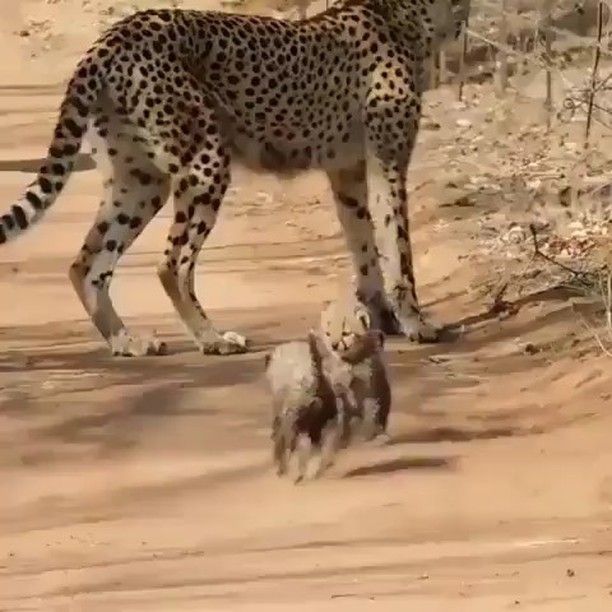 But when watching a cheetah run, you’ll appreciate just how well it can use its tail as a steering rudder.
But when watching a cheetah run, you’ll appreciate just how well it can use its tail as a steering rudder.
It’s unlikely you will ever see the kill up close. Once the cheetah runs, your safari vehicle won’t be able to keep up. However, many safari-goers experience the immediate aftermath of a hunt.
Lions and leopards typically pounce onto their prey from behind, biting at the neck.
Cheetahs don’t have that kind of strength.
Plus, jumping on the back of anything at 113 kph is risky. So instead, they trip their fast-moving prey.
Every attempt to trip up the impala will cost the cheetah vital fractions of a second. It will only have one or two chances to make this crucial move.
When the impala hits the ground, the cheetah pounces. It’s a quick and efficient kill. Exhausted and probably elated, the hunter has its quarry. But it’s not over yet.
Cheetahs are unable to eat their prey straight away – they’re just too worn out from the running.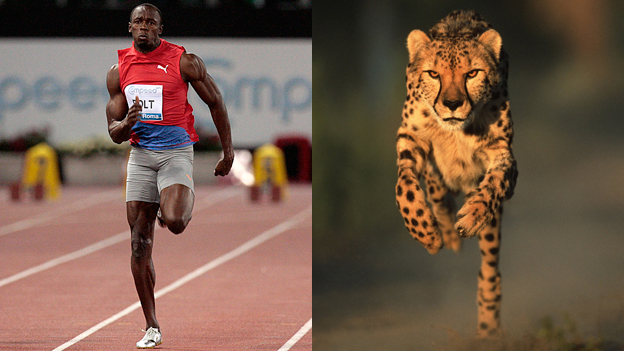 Unless they can hide their kill immediately, it becomes vulnerable to scavengers and bigger cats.
Unless they can hide their kill immediately, it becomes vulnerable to scavengers and bigger cats.
From a safari vehicle, you might watch a cheetah carrying its prey into the high grass. Or even the resonant sound of teeth cracking into bone.
Witnessing a cheetah running fast is a rare sight. It’s more likely you will encounter cheetahs when they are resting.
You can hear them purring and chirping, just one of many beautiful moments when you’re on an African safari.
Cheetah evolved on vast plains and open savannah across large parts of Africa and also Iran.
These landscapes offer lots of open space, meaning there is always somewhere to run.
But open plains aren’t easy for the top predators in Africa. There is limited cover, so it’s difficult to ambush prey.
Over many millennia the cheetah has adapted to hunt on these arid, open landscapes.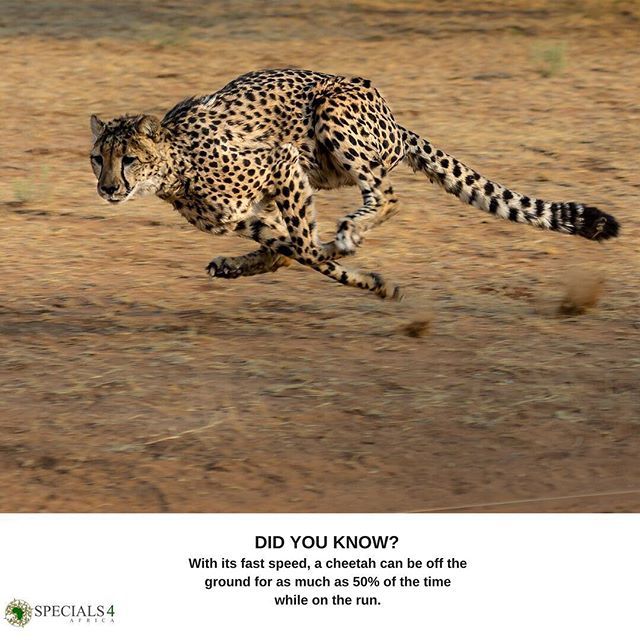
Their prey is small and nimble, typically impala, Thomson’s gazelle, wildebeest calf, plus a variety of antelope species of which the young and sick are targeted.
A cheetah’s choice of prey is lightweight and agile. These animals typically graze in herds, on landscapes away from trees and hiding places.
By sticking together, they can always scan for danger. These animals trust their speed when running away from predators.
Lions evolved with fearsome power and a group-based predatory instinct.
Leopards have incredible strength and stealth, allowing them to hunt prey far larger than themselves.
Cheetahs have evolved to run fast, so they can chase and catch their choice of prey.
If you’ve never been on an African safari, it’s easy to mistake leopards and cheetahs. Even on a safari, this can be difficult because it’s extremely rare to ever see these two animals side by side.
Both these predators are secretive cats who will avoid confrontation. Leopards are more commonly found residing in trees, while cheetahs are usually seen in the grass.
It’s terrible to take any animal captive and force them to live inside a cage. But the fastest animal of all? Cheetahs need space to run so it makes no sense to have them at a zoo.
These animals are born to run and have evolved exactly for that purpose. Unfortunately, in the not too distant future, it may only be possible to view cheetahs in zoos.
This remarkable animal has lost 91% of its historical range. Cheetahs are close to extinction, with less than 7000 of them remaining in the wild, and that number is plummeting at a terrible rate.
Cheetahs are the most specialized and evolved of all the big cats. Unfortunately, this has left them highly susceptible to habitat loss and habitat fragmentation.
This species could be an example of over-specialization. By making such extreme adaptations for a sole purpose (speed), cheetahs no longer have the diverse skills necessary to thrive in a changing environment.
Wide-open spaces are disappearing, and other cats can adapt to these changes.
For example, if a lion is forced into the forest it will still be an efficient hunter.
But if cheetahs can’t use their speed, they don’t have the strength or guile to hunt in alien conditions.
Less wilderness also means increased competition. More predators are found in close proximity, and cheetahs are unable to defend themselves, so they are forced into the outer reaches of a wilderness of a protected area.
Safari destinations with wide-open plains are best. The Serengeti and Masai Mara are obvious examples, although both Tanzania and Kenya have solid cheetah populations.
These sprinting cats are harder to encounter in Southern Africa. Zambia’s Liuwa Plain National Park and Botswana’s Central Kalahari or Okavango Delta should give you a good chance.
Less than 7000 is a harrowing figure, so you should get to Africa quickly while these incredible animals still remain in the wild.
A cheetah is one of the fastest creatures on Earth. Just how fast can a cheetah run? These majestic animals can hit top speeds of over 60 mph in a couple of strides. However, their numbers are dwindling in the wild.
However, their numbers are dwindling in the wild.
For a chance to see these incredibly fast animals in the wild, check out these African safari deals.
Running Cheetah Photo: Fotolia/photobar
Vladimir FradkinJuly 1, 2013
for a long time. It was believed that speed is the trump card of this predator on the hunt. But now British scientists have found that everything is much more complicated.
https://www.dw.com/ru/%D0%B3%D0%B5%D0%BF%D0%B0%D1%80%D0%B4-%D1%87%D0%B5%D0% BC%D0%BF%D0%B8%D0%BE%D0%BD-%D0%BC%D0%B8%D1%80%D0%B0-%D0%BF%D0%BE-%D1%82%D0 %BE%D1%80%D0%BC%D0%BE%D0%B6%D0%B5%D0%BD%D0%B8%D1%8E/a-16913493
Advertising
The cheetah is the fastest land animal on our planet. This predator is capable of reaching speeds of more than one hundred kilometers per hour, and it takes two seconds to accelerate from 0 to 75 kilometers per hour. Not every sports car can boast of such indicators. No greyhound dogs, no sports horses can keep up with cheetahs (and you can’t run away from cheetahs). Therefore, until now, zoologists have proceeded from the belief that it is precisely such an incredible running speed that is the main advantage of the cheetah on the hunt. However, strictly scientific verification, especially in the wild, this hypothesis has never been subjected. And in general, scientists knew little about the athletic abilities of these representatives of the cat family, with the exception of sprinting.
Not every sports car can boast of such indicators. No greyhound dogs, no sports horses can keep up with cheetahs (and you can’t run away from cheetahs). Therefore, until now, zoologists have proceeded from the belief that it is precisely such an incredible running speed that is the main advantage of the cheetah on the hunt. However, strictly scientific verification, especially in the wild, this hypothesis has never been subjected. And in general, scientists knew little about the athletic abilities of these representatives of the cat family, with the exception of sprinting.
High tech collars
And now British researchers have filled this gap. Alan Wilson, a professor at the Royal Veterinary College at Hatfield, and a group of his colleagues went to the southern African continent, to Botswana, captured five cheetahs east of the Okavango Delta and put special high-tech collars on them. “These collars are the result of a development that took us ten years,” explains Professor Wilson. “We managed to integrate a lot of sensors into them. These are GPS sensors, and inertia meters, and acceleration sensors, and gyroscopes, and magnetometers, so track the spatial position of the cheetah's body in real time.We measure all these parameters 300 times per second, so we know the location of the animal at any time, and the direction of its movement, and speed.Using these parameters, you can calculate what power the beast develops, and what is the adhesion of its paws to the ground, and in general what forces act there.
“We managed to integrate a lot of sensors into them. These are GPS sensors, and inertia meters, and acceleration sensors, and gyroscopes, and magnetometers, so track the spatial position of the cheetah's body in real time.We measure all these parameters 300 times per second, so we know the location of the animal at any time, and the direction of its movement, and speed.Using these parameters, you can calculate what power the beast develops, and what is the adhesion of its paws to the ground, and in general what forces act there.
The main thing is not speed, but maneuverability
The researchers monitored the movements of "their" cheetahs from a car and from a light aircraft. Previously, special radio receivers were installed in these vehicles, which recorded the signals sent by miracle collars.
Such an observation, which lasted 17 months, made it possible to learn a lot of new, interesting and even unexpected things about the behavior, hunting techniques and physical capabilities of cheetahs.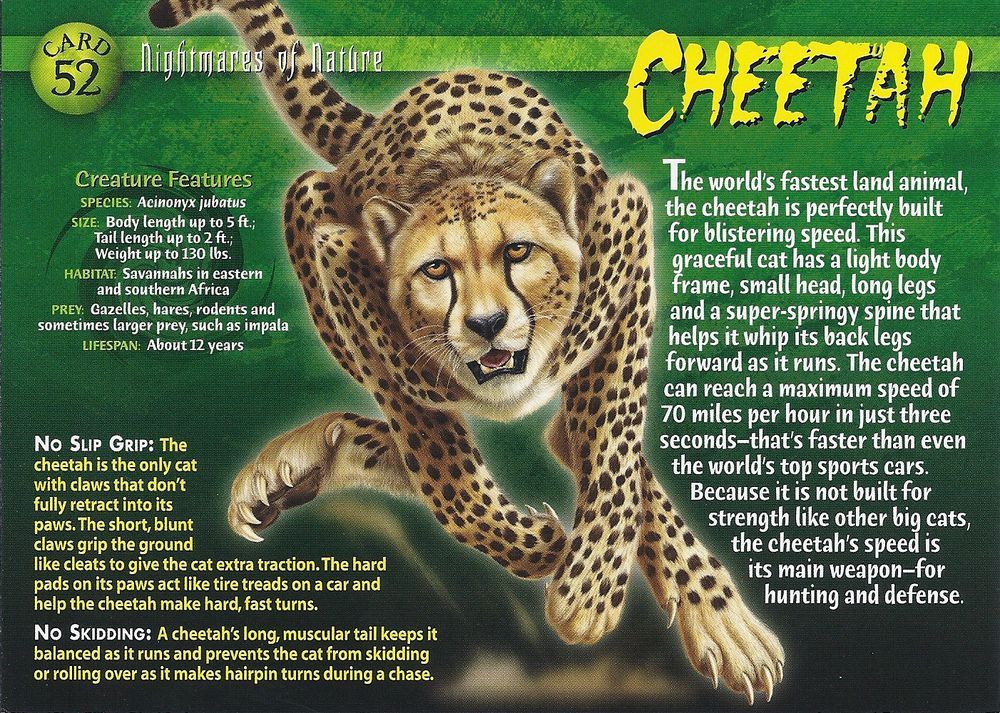 The results of the work are published in the journal Nature. Professor Wilson says: "To our amazement, it turned out that in the wild, cheetahs did not hunt at maximum speed at all. Although they did sometimes develop speeds in excess of 90 kilometers per hour, but only at very short distances, on average 173 meters long, only for a very short time, on average 1-2 seconds, and only very rarely, 1-2 times a day. The average running speed of cheetahs on the hunt is a little more than 50 kilometers per hour. Obviously, it is much more important for them not speed in a straight line, but agility, maneuverability, the ability to instantly change direction, accelerate movement and slow down. "
The results of the work are published in the journal Nature. Professor Wilson says: "To our amazement, it turned out that in the wild, cheetahs did not hunt at maximum speed at all. Although they did sometimes develop speeds in excess of 90 kilometers per hour, but only at very short distances, on average 173 meters long, only for a very short time, on average 1-2 seconds, and only very rarely, 1-2 times a day. The average running speed of cheetahs on the hunt is a little more than 50 kilometers per hour. Obviously, it is much more important for them not speed in a straight line, but agility, maneuverability, the ability to instantly change direction, accelerate movement and slow down. "
Better ground grip than tires
Indeed, cheetahs not only accelerate faster than all other terrestrial animals, but also slow down more sharply than anyone else, twice surpassing the second-best polo ponies in this indicator - specially trained horses for playing polo. If the maximum acceleration of a cheetah, measured by British scientists, is 5. 5 meters per second squared, then the maximum deceleration is 7.5 meters per second squared. One of the tools that provide cheetahs with this ability is their claws: they are only partially retractable, which is not typical for cats, and provide reliable contact with the ground during sharp maneuvers.
5 meters per second squared, then the maximum deceleration is 7.5 meters per second squared. One of the tools that provide cheetahs with this ability is their claws: they are only partially retractable, which is not typical for cats, and provide reliable contact with the ground during sharp maneuvers.
“In addition, cheetahs have an extremely flexible spine, which allows them to properly distribute the load on the body, so that even with the most inconceivable turns and turns, all four paws touch the ground,” says Professor Wilson. of any car tire. And, of course, muscles play a very important role: the muscles of the cheetah's paws, which, by the way, make up 45 percent of the mass of its entire body, have incredible strength. The fastest of "our" cheetahs developed power at the moment of maximum acceleration up to 100 watts per kilogram of body weight. For comparison: the Jamaican athlete Usain Bolt, multiple Olympic champion and world champion in sprinting, this figure is four times more modest. "
"
Only a quarter of the chase brings success
Another surprise came from the comparison of the GPS data obtained using the collars with the data from the geographic information system Google Earth. It turned out that cheetahs hunt not only in open areas, as was previously thought, but also in dense bushes. There, for sure, for success they need not speed, but agility. And sprint records are just one element of their hunting strategy.
However, we should not forget that success accompanies cheetahs only in every fourth pursuit of prey, that is, three times out of four the predator is left with nothing. And this is the other side of his sprint achievements: with a maximum speed of over 9At 0 kilometers per hour, the minimum turning radius of a cheetah, at which centrifugal force would not throw it out of the turn, is 52 meters. And even at half the speed, this radius is still unacceptably large - almost 20 meters. This is where the predator needs his ability to brake sharply: in just three steps, he can slow down so much that the turning radius is reduced to one meter.
Write to Editor
Advertisement
Skip Section Top Topic1 Page of 3
Skip Section Other Publications DWTo the main page
Japanese Defense Ministry: DPRK missiles capable of attacking the country can probably already carry a nuclear charge 05:42
Global Times: Stoltenberg showed fear by announcing NATO nuclear exercises 05:42
Security Council of the Russian Federation: Moscow is ready for dialogue with those who will not follow... 05:36
Cherchesov spoke about Ferencváros' plans to take revenge... 05:31
A nutritionist named products that are good for the nervous system 05:30
"For the first time in history": Ukrainian Air Force MiG-29 crashed while trying to shoot down. .. 05:25
.. 05:25
Lawyer Avdeeva: scammers have come up with a new way of deception with a "purchase"... 05:22
Fox News host accuses Biden of trying to cover up US problems ahead of the election 05:21
Svechnikov was the first Russian player to score a goal in the new NHL season 05:21
New ground stations have been developed to improve GLONASS accuracy 05:16
Science
close
100%
Special collars revealed the secrets of cheetah hunting. It's not so much their speed that makes them ideal assassins, but their ability to accelerate.
Reliable measurements of the instantaneous speed that the fastest animals in the world can develop, science does not know much. There is evidence in the scientific literature that cheetahs (Acinonyx Jubatus) develop the highest speed in the animal kingdom 29m / s (104 km / h), overtaking greyhounds (18 m / s) and horses (19 m / s). At the same time, accurate measurements of the speed of cheetahs were previously limited to the study of animals living in captivity, which were forced to run in a straight line for the bait: you cannot force a predator hunting in the wild to run in a straight line. Alan Wilson from the Royal Veterinary College (UK) decided to fill this knowledge gap.
At the same time, accurate measurements of the speed of cheetahs were previously limited to the study of animals living in captivity, which were forced to run in a straight line for the bait: you cannot force a predator hunting in the wild to run in a straight line. Alan Wilson from the Royal Veterinary College (UK) decided to fill this knowledge gap.
To track the speed of predators, as well as their acceleration and daytime movements, scientists have developed a special collar equipped with a GPS module, gyroscopes and an accelerometer.
"The main rivals will be the cheetah, the kangaroo and the African elephant"
The cheetah runs faster than Usain Bolt, and the fish in the ocean jump higher than Javier Sotomayor - these are ...
07 August 18:23
The instrument was equipped with solar panels that charged the battery during daylight hours. Biologists observed the lives of five cheetahs (three females and two males) for 17 months in the Botswana savannah. In total, 367 cheetah “runs” were analyzed during this period — sharp throws starting from a state of rest or slow movement. The data received from the collar made it possible to find out what part of the throws ended in the capture of the victim: as a rule, in such cases, the speed and acceleration of the animal after the throw vanishes.
In total, 367 cheetah “runs” were analyzed during this period — sharp throws starting from a state of rest or slow movement. The data received from the collar made it possible to find out what part of the throws ended in the capture of the victim: as a rule, in such cases, the speed and acceleration of the animal after the throw vanishes.
It turned out that the average throw length of cheetahs was 173 m, although in rare cases, in pursuit of prey, they are able to overcome up to half a kilometer. Perhaps the most surprising thing for scientists was that the maximum throwing speed for different animals averaged only 15 m / s, two times less than the “table” value, and was maintained for 1–2 seconds.
Tigers give way
While environmentalists are fighting against people for animals, they themselves have already adapted to a hostile environment. Following...
September 04 11:59
At the same time, the maximum recorded speed was only 26 m / s.
Of particular interest to researchers were data on acceleration, that is, how quickly felines can change the vector and direction of speed.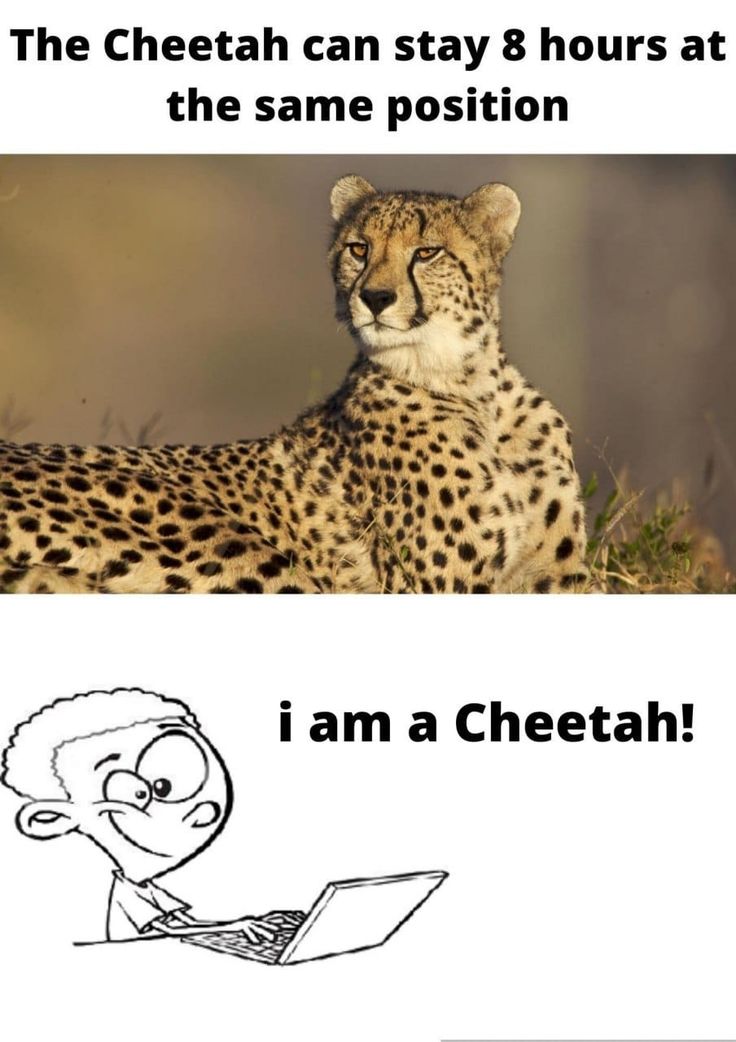 The results showed that cheetahs develop twice as much acceleration as horses: in one jerk, they can accelerate by 3 m / s or brake sharply by 4 m / s.
The results showed that cheetahs develop twice as much acceleration as horses: in one jerk, they can accelerate by 3 m / s or brake sharply by 4 m / s.
It is known that in captive cheetahs, the mass of muscles involved in the movement (back and limbs) reaches 45% of the total body weight. In wild animals, this figure is higher, although it is not known exactly. Such “sharpening” of the body of cheetahs for swift jerks and fast running makes them champions of the animal world in one more indicator - maximum specific power (in terms of a kilogram of weight).
Elephants talk, not purr
An experiment with the larynx of a dead elephant helped finally establish the mechanism by which these large animals...
07 August 18:23
And if Usain Bolt, the world champion, gives out 25 W / kg at a hundred meters, then in pursuit of an antelope, cheetahs “remove” four times more power from a unit of their own weight - three times higher than horses, and almost twice as much than greyhounds.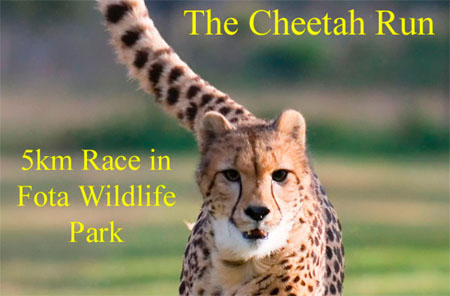
One of the most important factors that give cheetahs an advantage in hunting is their ability to quickly maneuver, or, in the language of mathematics, a large centripetal acceleration. Observations have shown that in pursuit of the prey, the cheetah is able to turn sharply, developing centripetal acceleration up to 13 m/s -2 .
This is several times higher than the overload experienced by astronauts when launching modern rockets.
These lateral dashes require a strong grip on the ground, provided by the sharp claws of predators. Watching cheetahs hunt made it possible to notice other unusual tricks. “Cheetahs try not to develop maximum rectilinear and centripetal acceleration at the same time. A quick stop unloads the back of the body, which leads to directional instability, as the center of mass is in front of the forelimbs, ”says the author of the study, published this Thursday in Nature .
Subscribe to Gazeta.Ru in News, Zen and Telegram.
To report a bug, select the text and press Ctrl+Enter
News
Zen
Telegram
Picture of the day
The UN General Assembly did not recognize the entry of new regions into Russia
"Lawful Military Targets". Minsk and Moscow warned Western "observers" in Ukraine
Foreign Minister of Belarus: sending observers to the border with Ukraine will become involved in the conflict
"There will be an important meeting." What Erdogan will discuss with Putin in Astana
Ushakov confirmed that Moscow is waiting for an offer from Ankara on a settlement in Ukraine
TRT Haber named the topics of the meeting between Erdogan and Putin in Astana
Biden called the UN General Assembly resolution a demonstration of the attitude of the world to the actions of the Russian Federation in Ukraine
Macron promised to transfer six Caesar howitzers and anti-aircraft missiles to Ukraine
Embassy of the Russian Federation: Deputy Prime Minister of Canada does not hide the goals of the West to dominate the world
News and materials
Japanese Defense Ministry: DPRK missiles capable of attacking the country can probably already carry a nuclear charge
Global Times: Stoltenberg showed fear by announcing NATO nuclear exercises
Security Council of the Russian Federation: Moscow is ready for dialogue with those who will not follow in the wake of Western policy
Cherchesov spoke about Ferencváros' plans to take revenge on Red Star in the Europa League
A nutritionist named foods that are good for the nervous system
"For the first time in history": MiG-29 of the Ukrainian Air Force crashed while trying to shoot down the Geran-2 UAV of the Russian Armed Forces
Ronaldo names the future Ballon d'Or winner
Lawyer Avdeeva: scammers came up with a new way to cheat with a "purchase" on Aliexpress
Fox News host accuses Biden of trying to cover up US problems ahead of the election
Svechnikov was the first Russian player to score a goal in the new NHL season
To improve the accuracy of GLONASS, new ground stations have been developed
Actor Fraser expressed his desire to star in the fourth part of The Mummy
TASS: control over the speed of electric scooters by cameras requires changes in legislation
Ignatiev said that they want to remove Belarus from Euro 2024 because of friendship with Russia
RIA Novosti: "Right Sector" * planned to riot in Melitopol
The President of South Korea refused to answer the question about the deployment of US nuclear weapons in the country
RIA Novosti: the deceased driver of the truck on the Crimean bridge is not suspected in the terrorist attack
Tikhonov about Swedish skiers' threats to boycott the World Championships: it's very good that they won't come!
All news
What new cars are left with dealers in Russia
Avtostat: in 2022, car sales in Russia will fall by 60%
Russian military operation in Ukraine. Day 231st
Online broadcast of the military special operation of the Russian Federation in Ukraine - 231st day
"Americans remember the fear of nuclear war." How Biden's words alarmed the USA
WT wrote about the great resonance in the world because of Biden's talk about "nuclear Armageddon"
"There are very pessimistic forecasts." How Europe will live without Russian gas
The head of Gazprom Miller warned that entire cities in Europe could freeze in winter
From the Gospel to Viy: the best books according to Russian classics
What Pushkin, Dostoyevsky, Bulgakov and other writers liked to read
Why motorized rifles were the most in demand during mobilization
Former military commissar Moiseev explained the army’s need for infantry
The Cranes Are Flying is back on the big screens. Interesting facts about the movie
Putin again hinted at the perpetrators of the Nord Stream explosions
Putin told who is behind the attacks on Russian energy facilities
Peskov: there is no second wave of mobilization in Russia. But people are being called in
The Kremlin denied reports of the beginning of the second wave of mobilization in Russia
The FSB named the organizer of the explosion on the Crimean bridge. He threatened Russia with terrorist attacks0005
Drink coffee, lose weight quickly and endure the urge to go to the toilet: what “kills” the kidneys
Urologist Galimov said that protein diets can lead to urolithiasis
The fate of an American. Biden named one reason to meet with Putin
Biden announced his readiness to discuss with Putin the fate of imprisoned basketball player Greiner
"Family Friend": an unthinkable true-crime story of two kidnappings of one girl
Review of the shocking TV series "Family Friend" based on real events
Vitaly Tuzov
Increase and not lose
About what to invest in this fall